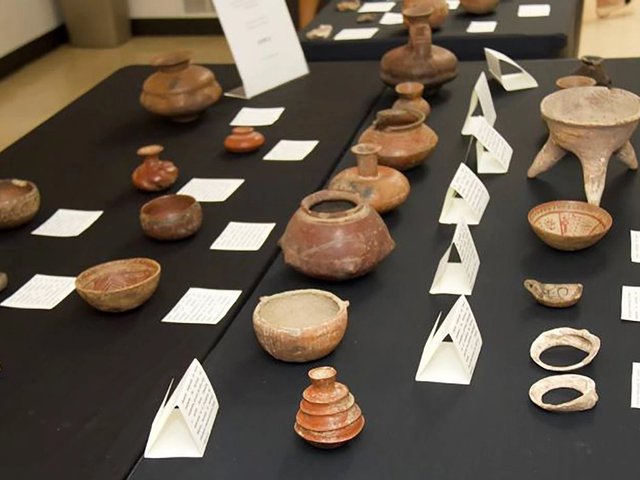German authorities returned 75 archaeological artefacts to the government of Mexico in a ceremony held at the Mexican Embassy in Berlin on 23 November. Seventy-four of the items were voluntarily returned this year by the Museum Schloss Salder in Saltzgitter, located in the state of Lower Saxony, while the remaining item was confiscated by customs agents in Leipzig.
According to anthropologist Diego Prieto, the 74 former museum objects were initially trafficked 120 years ago by a German national who was involved in well-drilling in the city of Tampico in the present-day state of Tamaulipas on Mexico's Gulf Coast. The objects were donated to the Museum Schloss Salder in 1963, at which point museum staffers identified their origins at Huastecan, an Indigenous Mesoamerican civilisation that dominated the Gulf of Mexico—the dialect is still spoken by 66,000 people today. The other repatriated item is a 4,000-year old stone mortar tripod that was seized by customs officials in Leipzig after its intended recipient failed to provide the necessary certification.

The stone mortar seized by customs authorities in Leipzig that was repatriated to Mexico on 23 November Courtesy Instituto Nacional de Antropología e Historia (INAH) and the Mexican Embassy in Berlin
“Taking these archaeological pieces as souvenirs or decorative items is an affront to the native peoples,” Francisco José Quiroga Fernández, Mexico's ambassador to Germany, said during the ceremony. “Their restitution not only guarantees their preservation and study, but also returns a fundamental part of their historical memory to our Indigenous communities.”
The return of these items brings the tally of archaeological artefacts repatriated to Mexico during president Andrés Manuel López Obrador’s administration to 13,422. His administration launched the viral social media campaign #MiPatrimonioNoSeVende ("My Heritage Is Not For Sale") to advocate for the recovery of Mexico’s historical assets; it has raised awareness of the subject in countries all over the world. In August, a Belgian citizen voluntarily returned 20 archaeological goods to Mexico, citing #MiPatriaNoSeVende as her inspiration. In May, Mexico secured the return of Chalcatzingo’s Monument 9, more popularly known as the “Portal of the Underworld”, back to its rightful home. The 2,500-year-old Olmec monument had long been a priority in the country’s repatriation efforts.






